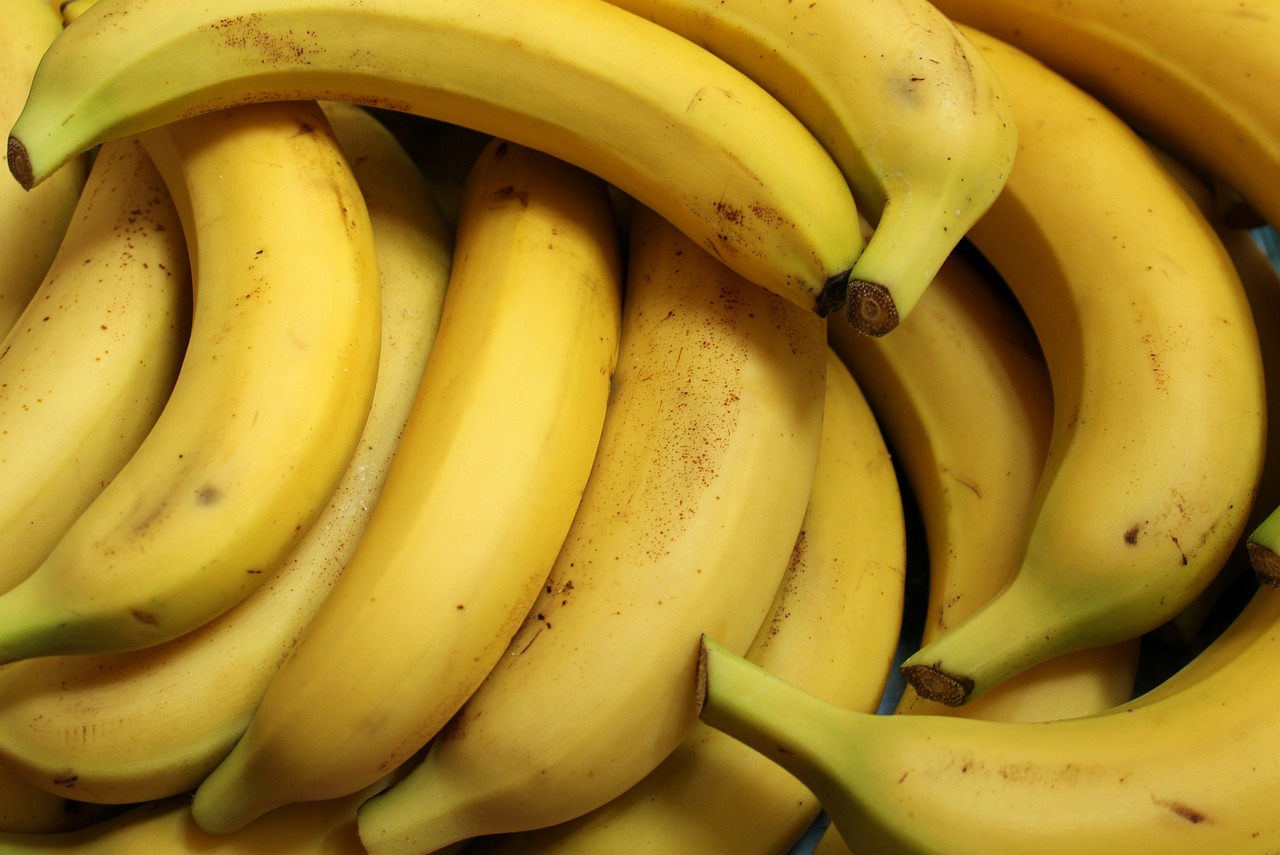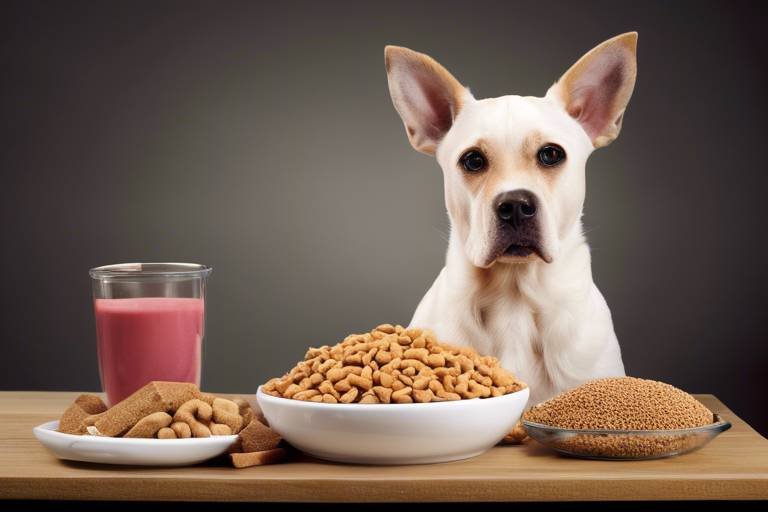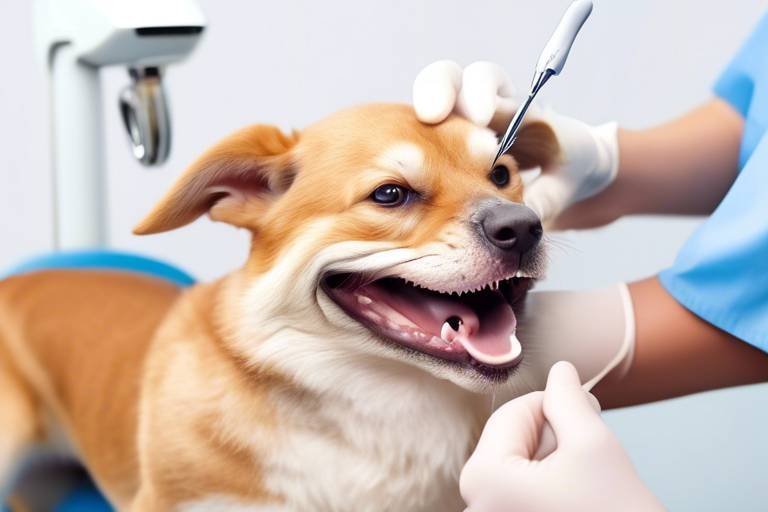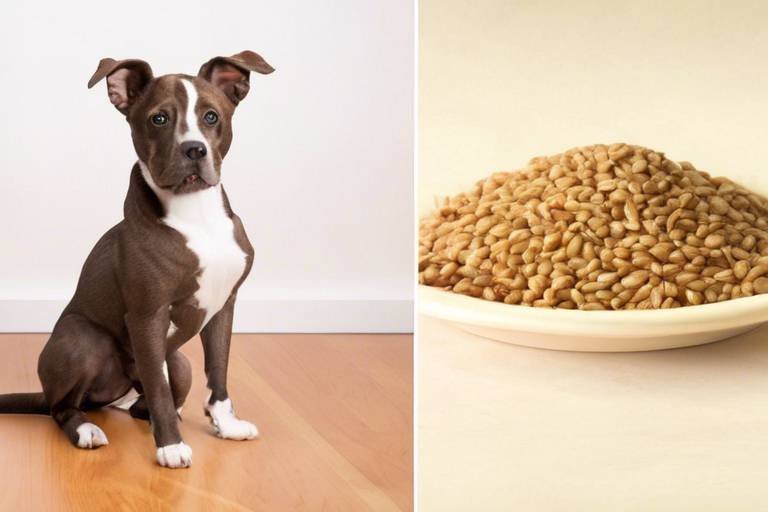The Benefits of Feeding Pets Fresh, Whole Foods
Have you ever looked at your pet and wondered if they’re getting the best nutrition possible? The truth is, just like us, our furry friends thrive on fresh, whole foods that nourish their bodies and keep them healthy. This article explores the numerous advantages of incorporating these natural ingredients into your pet's diet, highlighting health, nutrition, and overall well-being for your furry companions. Think of fresh foods as the superhero of your pet’s diet, swooping in to save the day with essential nutrients and improved digestion!
One of the most compelling reasons to switch to fresh, whole foods is the improved nutrition they provide. Processed pet foods often lack the essential nutrients that our pets need to thrive. By choosing natural ingredients, you can significantly enhance your pet's diet. For instance, whole foods are rich in vitamins, minerals, and antioxidants that support their immune system and overall health. Imagine feeding your pet a meal filled with colorful vegetables and high-quality proteins; it’s like giving them a multivitamin in every bite!
Another fantastic benefit of feeding pets whole foods is the potential for enhanced digestion. Many pets suffer from gastrointestinal issues, and the right diet can make all the difference. Fresh ingredients can help improve your pet's digestive health and overall comfort. Think of their digestive system as a garden; it needs the right nutrients to flourish. By incorporating whole foods, you’re essentially planting the seeds for a healthy gut!
Including fiber-rich whole foods in your pet's diet can aid digestion and prevent constipation. Foods like sweet potatoes, pumpkin, and leafy greens are excellent sources of fiber. Just as we need fiber to keep our digestive systems running smoothly, our pets do too! Adding fruits and vegetables to their meals can be like sprinkling magic dust on their diet, transforming it into a powerhouse of nutrients.
Certain vegetables are not just safe but also incredibly beneficial for your pets. Vegetables such as carrots, green beans, and spinach are packed with vitamins and minerals. They can help boost your pet's immune system and provide essential nutrients. Just remember to introduce new veggies gradually to avoid any tummy troubles. It’s all about finding the right balance!
Fruits can offer a natural sweetness and additional vitamins that your pets will love. Options like blueberries, apples (without seeds), and bananas are not only delicious but also nutrient-rich. Think of fruits as the dessert of your pet's diet—sweet, satisfying, and good for them! Just be sure to moderate their intake, as too much sugar can be a concern.
Whole foods provide high-quality protein, which is essential for your pet's growth and energy. Proteins from sources like chicken, fish, and beef can help maintain muscle mass and support overall health. Imagine your pet as an athlete; they need the right fuel to perform at their best! By choosing fresh proteins, you’re giving them the best chance to thrive and stay active.
Maintaining a healthy weight is crucial for pets, and fresh foods can help achieve this by providing balanced nutrition without excessive calories. A diet rich in whole foods can help manage your pet's weight effectively. Think of it as a balanced budget; you want to spend your calories wisely! By focusing on fresh ingredients, you can avoid the pitfalls of overfeeding and ensure your pet stays fit and healthy.
Understanding proper portion sizes is vital for weight management. It’s easy to overestimate how much our pets need, especially when they give us those adorable puppy eyes. A good rule of thumb is to consult with your veterinarian about the right portions for your pet's size and activity level. Remember, measuring and serving fresh foods can be a game-changer in keeping their weight in check.
Let’s face it, we all love to spoil our pets with treats, but commercial options often come packed with unnecessary calories and additives. Why not replace them with fresh, whole food alternatives? Think of delicious options like carrot sticks, apple slices, or homemade peanut butter treats. These alternatives not only satisfy your pet's cravings but are also nutritious and low in calories. It’s a win-win!
Many pets suffer from food allergies, and feeding them fresh, whole foods can help identify allergens and manage symptoms effectively. By tailoring their diet to include only fresh ingredients, you can pinpoint what works for them and what doesn’t. It’s like being a detective for your pet’s health! Keep an eye on their reactions to different foods and consult with your vet to help reduce allergic reactions.
- What are some examples of fresh, whole foods for pets? Fresh meats, vegetables, and fruits are great choices.
- Can I feed my pet table scraps? It’s best to avoid human food that’s not pet-friendly. Stick to safe fruits and veggies!
- How do I transition my pet to a fresh food diet? Gradually mix fresh foods with their regular diet to avoid digestive upset.

Improved Nutrition
This article explores the numerous advantages of incorporating fresh, whole foods into your pet's diet, highlighting health, nutrition, and overall well-being for your furry companions.
When it comes to our beloved pets, their nutrition is paramount. Fresh, whole foods provide a plethora of essential nutrients that processed pet foods often lack. Imagine feeding your pet a meal that is not only delicious but also packed with vitamins, minerals, and antioxidants. This is the magic of whole foods! Unlike commercial pet foods that might contain fillers and artificial additives, fresh ingredients deliver the nutrients your furry friends need to thrive.
Research has shown that pets who consume fresh, whole foods tend to exhibit improved overall health. For instance, you'll notice a shinier coat, increased energy levels, and a more playful demeanor. These benefits stem from the high-quality ingredients that whole foods offer. Think about it: just as we feel better when we eat a colorful salad or a juicy piece of fruit, our pets experience similar benefits. They deserve the same love and care in their diet!
Let’s break down some of the key nutrients found in fresh foods:
- Vitamins: Fresh fruits and vegetables are rich in vitamins like A, C, and E, which play vital roles in maintaining a healthy immune system.
- Minerals: Whole foods provide essential minerals such as calcium and phosphorus, crucial for strong bones and teeth.
- Antioxidants: These help combat free radicals, reducing the risk of chronic diseases and promoting longevity.
Incorporating a variety of fresh ingredients into your pet's meals can significantly enhance their diet. For example, leafy greens like spinach and kale are not only packed with nutrients but also low in calories, making them an excellent addition to your pet's bowl. Additionally, lean meats, such as chicken or turkey, provide high-quality protein necessary for muscle development and energy.
Furthermore, the absence of artificial preservatives and fillers in fresh foods means that your pet's body can better absorb the nutrients. This leads to improved digestion and overall health. It’s like giving your pet a nutritional upgrade—one that can lead to a longer, happier life. So, the next time you're at the grocery store, consider picking up some fresh ingredients for your furry friend. They will thank you with wagging tails and purring cuddles!
Feeding pets whole foods can promote better digestion, reducing gastrointestinal issues. Learn how fresh ingredients can improve your pet's digestive health and overall comfort.
Including fiber-rich whole foods in your pet's diet can aid digestion and prevent constipation. Explore the benefits of adding fruits and vegetables to their meals.
Certain vegetables are excellent sources of fiber and nutrients. Understand which vegetables are safe and beneficial for your pets.
Fruits can offer a natural sweetness and additional vitamins. Find out which fruits are suitable for your pets and how to incorporate them.
Whole foods provide high-quality protein, essential for your pet's growth and energy. Discover the best sources of protein for your furry friends.
Fresh foods can help maintain a healthy weight in pets by providing balanced nutrition without excessive calories. Learn how to manage your pet's weight effectively through diet.
Understanding proper portion sizes is crucial for weight management. Gain insights into how to measure and serve fresh foods for your pets.
Replace commercial treats with fresh, whole food options. Discover delicious and nutritious alternatives that will satisfy your pet's cravings without added calories.
Many pets suffer from food allergies. Feeding them fresh, whole foods can help identify allergens and manage symptoms effectively. Learn how to tailor their diet to reduce allergic reactions.
1. Can I feed my pet only fresh, whole foods?
Yes, many pet owners choose to feed their pets a diet primarily based on fresh, whole foods. However, it's crucial to ensure that the diet is balanced and meets all nutritional needs. Consulting with a veterinarian or pet nutritionist is recommended.
2. Are there any foods that are toxic to pets?
Yes, certain foods like chocolate, grapes, onions, and garlic can be toxic to pets. Always research and ensure that any new food you introduce is safe for your pet.
3. How do I transition my pet to a fresh food diet?
Transition gradually by mixing small amounts of fresh food with their regular food, increasing the fresh food proportion over time. This helps prevent digestive upset.
4. Can I use leftovers from my meals for my pet?
While some leftovers can be safe, it’s essential to avoid foods that are heavily seasoned or contain ingredients harmful to pets. Always check before sharing.

Enhanced Digestion
When it comes to our furry friends, their digestion is just as important as their overall health. Feeding pets fresh, whole foods can make a world of difference in how well they digest their meals. You might be wondering, "How does this work?" Well, think of it this way: just like us, pets thrive on natural ingredients that their bodies can easily recognize and break down. Processed pet foods often contain fillers and artificial additives, which can lead to digestive discomfort. By switching to fresh foods, you can help your pet's digestive system function more smoothly, leading to fewer gastrointestinal issues.
One of the key benefits of whole foods is their fiber content. Fiber plays a crucial role in digestion, helping to regulate bowel movements and prevent constipation. Imagine fiber as a gentle broom sweeping through your pet's intestines, keeping everything clean and moving along. Fruits and vegetables are excellent sources of fiber, and incorporating them into your pet's diet can significantly improve their digestive health. For instance, adding a bit of pumpkin or sweet potato can work wonders for your pet's gut.
So, what are some fiber-rich whole foods you can include in your pet's meals? Here’s a quick rundown:
- Pumpkin: High in fiber and great for digestion.
- Carrots: Crunchy and packed with nutrients.
- Green beans: Low in calories and high in fiber.
- Sweet potatoes: A delicious source of fiber and vitamins.
These ingredients not only aid in digestion but also provide essential vitamins and minerals that support overall health. Just remember to introduce new foods gradually to avoid any digestive upset.
Certain vegetables are particularly beneficial for pets. For example, carrots are not only crunchy and fun to eat, but they are also rich in beta-carotene, which is good for your pet's vision and immune system. Similarly, leafy greens like spinach and kale are packed with nutrients and can be added to your pet's meals in moderation. However, it’s essential to know which vegetables are safe for pets, as some can be harmful. Always do your research or consult your vet before introducing new foods.
Fruits can bring a natural sweetness to your pet's diet while also providing a boost of vitamins and antioxidants. For example, blueberries are a fantastic snack for dogs and cats alike, offering health benefits while being low in calories. Apples, without the seeds, are another great option, providing fiber and vitamin C. You can incorporate fruits into their meals or serve them as treats. Just be cautious with portion sizes, as too much sugar can lead to weight gain.
In summary, enhancing your pet's digestion with fresh, whole foods is not just about what they eat but how it affects their overall well-being. By focusing on high-fiber ingredients and understanding the benefits of various fruits and vegetables, you can create a diet that promotes good digestive health and keeps your furry friends feeling their best.
Q: Can I feed my pet only fresh foods?
A: While fresh foods are excellent, it's important to ensure that your pet's diet is balanced and meets their nutritional needs. Consult with your veterinarian for tailored advice.
Q: What are some signs of digestive issues in pets?
A: Signs can include vomiting, diarrhea, constipation, or a change in appetite. If you notice any of these symptoms, consult your vet.
Q: How can I introduce fresh foods to my pet's diet?
A: Start by mixing small amounts of fresh foods with their regular diet. Gradually increase the amount while monitoring their reaction.
Fiber-Rich Ingredients
When it comes to keeping our furry friends healthy and happy, play a pivotal role in their diets. Just like humans, pets require a balanced intake of nutrients, and fiber is often the unsung hero in the quest for optimal health. It’s not just about filling their bellies; it’s about ensuring that their digestive systems are running smoothly. Imagine fiber as the broom that sweeps through your pet's digestive tract, helping to clear away any potential blockages and promoting overall gut health. By incorporating fiber-rich whole foods into your pet's meals, you can significantly enhance their digestion and overall well-being.
So, what exactly are these fiber-rich ingredients? Well, fruits and vegetables are your best friends here! They provide not only fiber but also a plethora of vitamins and minerals that are essential for your pet's health. For instance, carrots are a fantastic source of fiber and can be served raw or cooked, making them a versatile addition to your pet's diet. Similarly, green beans and pumpkin are excellent choices that can help regulate your pet's digestive system. You might be surprised to learn that a small amount of pumpkin can work wonders for pets suffering from constipation or diarrhea!
Now, let’s break this down a bit. Here’s a quick overview of some fiber-rich ingredients that can benefit your pet:
| Ingredient | Fiber Content (per 100g) | Benefits |
|---|---|---|
| Carrots | 2.8g | Supports vision and boosts immune health. |
| Green Beans | 2.7g | Low-calorie snack that aids digestion. |
| Pumpkin | 3g | Helps with digestive issues and is rich in vitamins. |
| Apples (without seeds) | 2.4g | Provides antioxidants and promotes dental health. |
Incorporating these ingredients into your pet's meals can be as simple as mixing them in with their regular food or offering them as treats. Just remember to introduce new foods gradually to avoid any digestive upset. And, while it's easy to get excited about adding new ingredients, moderation is key. Too much fiber can lead to gas and bloating, so always keep an eye on how your pet reacts to dietary changes.
Ultimately, by adding fiber-rich ingredients to your pet's diet, you’re not just filling their bowl with food; you’re providing them with a natural way to enhance their digestion, boost their energy levels, and improve their overall health. Consider it a small, yet impactful change that can lead to a happier, healthier life for your beloved companion.
Benefits of Vegetables
When it comes to our furry friends, vegetables can be a game changer in their diet. Just like we need a variety of nutrients to thrive, so do our pets! Incorporating a range of vegetables into their meals not only enhances their meals but also brings a plethora of health benefits. For instance, certain vegetables are packed with vitamins, minerals, and antioxidants that can help boost your pet's immune system, keeping them vibrant and full of life.
One of the standout benefits of vegetables is their high fiber content. Fiber is essential for maintaining a healthy digestive system, and it can help prevent issues like constipation. Imagine your pet's gut as a bustling highway; fiber acts like traffic lights, ensuring everything flows smoothly. When you add fiber-rich vegetables to their diet, you're essentially helping to keep the traffic moving! Some great options to consider include:
- Carrots: Crunchy and sweet, they are not only low in calories but also high in beta-carotene, which is great for your pet's eyesight.
- Green Beans: These are excellent for filling up your pet without adding too many calories.
- Spinach: Packed with iron and vitamins, spinach can be a nutritious addition in moderation.
Moreover, many vegetables contain antioxidants that combat free radicals in your pet's body, contributing to overall health and longevity. Think of antioxidants as tiny warriors that protect your pet's cells from damage. By including a variety of colorful vegetables in their diet, you're not only making their meals more appealing but also fighting off potential health issues before they arise.
It's important to note that not all vegetables are safe for pets. Some, like onions and garlic, can be harmful. Always do your research or consult with your veterinarian before introducing new foods. When you find the right veggies, you can prepare them in a way that's both tasty and healthy. Steaming or lightly cooking vegetables can enhance their digestibility, making it easier for your pet to absorb all those wonderful nutrients.
In summary, adding vegetables to your pet's diet is akin to giving them a nutritional boost. Not only do they provide essential vitamins and minerals, but they also promote healthy digestion and can even help in weight management. So, the next time you’re chopping up your salad, consider sharing a few veggie scraps with your furry companion. They’ll love you for it, and their health will thank you!
Role of Fruits
When it comes to our furry friends, fruits play an essential role in their diet, offering a delightful combination of natural sweetness and vital nutrients. Just like humans, pets can benefit immensely from the vitamins, minerals, and antioxidants found in fruits. These vibrant, colorful foods not only add variety to your pet's meals but also contribute to their overall health and well-being. Imagine your pet's plate filled with fresh, juicy fruits—it's not just delicious; it's a powerhouse of nutrition!
One of the most significant advantages of incorporating fruits into your pet's diet is the abundance of vitamins they provide. For instance, fruits like blueberries are rich in Vitamin C and antioxidants, which can boost your pet's immune system and help combat oxidative stress. Similarly, apples are a fantastic source of Vitamin A and fiber, promoting healthy digestion and supporting eye health. However, it's crucial to remember that not all fruits are safe for pets. Some can be harmful, so always do your research before introducing new foods.
Fruits can also serve as a natural way to keep your pets hydrated. Many fruits have high water content, which can be especially beneficial during hot summer months. For example, watermelon is not only refreshing but also helps keep your pet cool and hydrated. Just be sure to remove the seeds and rind before serving, as they can pose health risks. The key is to offer fruits in moderation, ensuring that they complement your pet's balanced diet rather than replace essential nutrients found in their regular meals.
Incorporating fruits into your pet's diet can be done in several enjoyable ways. You can serve them fresh, slice them up as treats, or even blend them into homemade pet food recipes. Just think of it as a fun, tasty adventure! You might even find that your pet enjoys a fruit salad made specifically for them—what a delightful way to make mealtime exciting!
To help you navigate the world of pet-friendly fruits, here’s a quick overview of some safe options:
| Fruit | Benefits |
|---|---|
| Blueberries | High in antioxidants and Vitamin C |
| Apples | Rich in fiber and Vitamin A; great for digestion |
| Watermelon | Hydrating and low in calories; great for hot days |
| Bananas | Good source of potassium and energy |
| Strawberries | High in fiber and Vitamin C; can help regulate blood sugar |
In conclusion, fruits are not just a treat; they are a valuable addition to your pet's diet that can enhance their health and happiness. By selecting safe, nutritious fruits and serving them in moderation, you can create a balanced and enjoyable diet for your beloved companions. So, why not take a moment to explore the wonderful world of fruits for pets? Your furry friend will thank you with wagging tails and happy purrs!
- Can all fruits be fed to pets? No, some fruits can be harmful. Always check which fruits are safe for your specific pet.
- How should I introduce fruits to my pet's diet? Start with small amounts and observe for any adverse reactions.
- Are fruits a substitute for regular pet food? No, fruits should complement a balanced diet and not replace regular pet food.
Protein Sources
When it comes to our beloved pets, protein is a vital component of their diet, playing a crucial role in growth, energy, and overall health. Just like humans, pets require high-quality protein to fuel their daily activities and maintain strong muscles. But what exactly are the best sources of protein for your furry friends? Well, let’s dive into the world of fresh, whole foods and discover the protein-packed options available to us.
First up, lean meats are often the go-to choice for many pet owners. Chicken, turkey, and lean cuts of beef are excellent sources of protein that can be easily incorporated into your pet's meals. Not only do these meats provide essential amino acids, but they also offer a delicious flavor that most pets simply can't resist. Just remember to cook the meat thoroughly and avoid seasoning it with ingredients that could be harmful to your pet.
Next on the list are fish, which are not only rich in protein but also packed with omega-3 fatty acids that promote a shiny coat and healthy skin. Salmon and sardines are fantastic choices, but be cautious of bones and ensure they are properly prepared. Fish can be a delightful addition to your pet’s diet, offering a taste of the ocean that they will surely love.
Don't forget about eggs! They are a powerhouse of protein and can be served scrambled, boiled, or even raw (if you’re comfortable with it). Eggs are incredibly versatile and can be mixed into your pet's food for an extra protein boost. Plus, they are rich in vitamins and minerals that contribute to overall health.
For those who prefer plant-based options, legumes such as lentils and chickpeas are excellent sources of protein. Although they should not replace animal proteins entirely, they can be a fantastic addition to your pet's diet, especially for those who may have specific dietary restrictions or preferences. Just make sure to cook them thoroughly to aid in digestion.
Finally, let’s not overlook dairy products like yogurt and cottage cheese. These can serve as occasional treats or meal toppers, providing a good source of protein along with probiotics that aid in digestion. However, be cautious with lactose intolerance in pets; not all pets can handle dairy well.
Here’s a quick comparison of some great protein sources for your pets:
| Protein Source | Benefits | Preparation Tips |
|---|---|---|
| Lean Meats (Chicken, Turkey, Beef) | High in protein, flavorful | Cook thoroughly, no seasoning |
| Fish (Salmon, Sardines) | Rich in protein and omega-3s | Remove bones, serve cooked |
| Eggs | Complete protein, versatile | Cooked or raw (if safe) |
| Legumes (Lentils, Chickpeas) | Plant-based protein | Cook thoroughly |
| Dairy (Yogurt, Cottage Cheese) | Protein and probiotics | Check for lactose tolerance |
In conclusion, incorporating a variety of protein sources into your pet's diet can significantly enhance their health and vitality. By choosing fresh, whole foods, you can ensure that your furry companions receive the nutrients they need to thrive. Just remember to introduce new foods gradually and monitor your pet for any adverse reactions. After all, a happy and healthy pet is a well-fed pet!
- Can I feed my pet raw meat? - While some pet owners choose a raw diet, it's essential to do thorough research and consult with a vet to ensure safety and balance.
- How much protein does my pet need? - Protein requirements vary by species, age, and activity level. Consult your veterinarian for personalized recommendations.
- Are there any protein sources I should avoid? - Yes, certain foods like chocolate, onions, and garlic are toxic to pets and should be avoided.
- Can I mix different protein sources? - Absolutely! Mixing different protein sources can provide a more balanced diet and keep mealtime exciting for your pet.

Weight Management
Managing your pet's weight is crucial for their overall health and longevity. Just like us, our furry friends can struggle with obesity, which can lead to a host of health problems, including diabetes, joint issues, and heart disease. One of the most effective ways to ensure your pet maintains a healthy weight is by incorporating fresh, whole foods into their diet. These foods not only provide balanced nutrition but also help to keep their caloric intake in check.
When you feed your pet fresh foods, you have more control over what they consume. You can tailor their meals to meet their specific needs and adjust portion sizes based on their activity level. This is especially important for pets that may be less active or have a tendency to gain weight. Understanding proper portion sizes is essential. For instance, a dog that weighs 20 pounds generally requires about 400-600 calories per day, depending on their age and activity level. By using whole foods, you can easily measure out the right amounts, ensuring they get the nutrients they need without overindulging.
Moreover, fresh foods are often more filling than processed options, which means your pet may feel satisfied with smaller portions. This can help prevent the urge to overeat. For example, including high-water-content foods like cucumbers or carrots can provide bulk without adding many calories. This is akin to how we might choose a salad over a heavy pasta dish when trying to watch our weight—it's all about making smarter choices!
| Pet Type | Recommended Daily Caloric Intake |
|---|---|
| Small Dog (under 20 lbs) | 200-400 calories |
| Medium Dog (20-50 lbs) | 400-800 calories |
| Large Dog (50-100 lbs) | 800-1600 calories |
| Cat (all sizes) | 200-400 calories |
Another effective strategy for weight management is to replace commercial treats with fresh, whole food alternatives. Not only are these healthier, but they can also be more appealing to your pet. For instance, instead of giving your dog a store-bought biscuit, try offering them small pieces of apple or carrot. These snacks are low in calories and packed with nutrients, making them a win-win for both you and your pet. Plus, your pet will love the natural flavors!
In summary, by focusing on fresh, whole foods, you can significantly aid your pet in achieving and maintaining a healthy weight. It's all about providing balanced nutrition, controlling portions, and making smart choices about treats. Remember, a healthy pet is a happy pet!
- How do I know if my pet is overweight? Look for signs like difficulty in feeling their ribs, a noticeable belly, or a lack of energy. A visit to your vet can also provide insight.
- What are some good fresh food options for pets? Lean meats, vegetables like carrots and peas, and fruits like blueberries and apples are excellent choices.
- Can I feed my pet human food? Yes, but ensure that it’s safe for them. Avoid toxic foods like chocolate, grapes, and onions.
- How often should I feed my pet? Most pets do well with two meals a day, but it can vary based on their age and activity level.
Portion Control
When it comes to feeding our furry companions, is absolutely essential. Just like us, pets can struggle with maintaining a healthy weight if they're served too much food. Think of it this way: if you were to eat a whole pizza by yourself, you'd probably feel pretty sluggish afterward, right? The same goes for our pets. Overfeeding can lead to a myriad of health issues, including obesity, diabetes, and joint problems. So, how do we ensure that our pets are getting just the right amount of fresh, whole foods?
The first step is to understand your pet's specific needs based on their age, breed, and activity level. For example, a playful puppy will require more calories than a senior dog who loves to lounge around. To help you navigate this, consider the following guidelines:
| Pet Type | Daily Caloric Needs |
|---|---|
| Small Dogs (up to 20 lbs) | 200-400 calories |
| Medium Dogs (21-50 lbs) | 400-800 calories |
| Large Dogs (51 lbs and up) | 800-1500 calories |
| Cats | 200-300 calories |
Once you have a grasp on how many calories your pet should consume daily, it's time to break that down into manageable portions. A good rule of thumb is to divide their daily intake into two or three meals. This not only helps with digestion but also keeps their energy levels stable throughout the day. Just imagine how much better you feel when you eat smaller meals more frequently instead of stuffing yourself all at once!
Another crucial aspect of portion control is measuring out the food. It's easy to underestimate how much we're actually serving. Use a measuring cup or kitchen scale to ensure accuracy. You might be surprised at how quickly those portions can add up! If you're transitioning to fresh foods, start by mixing a small amount with their regular food to see how they adjust. Gradually increase the fresh food while decreasing the processed options to avoid digestive upset.
Lastly, don't forget about treats! While it's tempting to spoil your pet with tasty snacks, these can add up in calories. Opt for fresh fruits and vegetables as healthy treats. For instance, carrots, green beans, or apple slices can be delightful alternatives that won't derail their diet. Remember, a little goes a long way when it comes to keeping your pet healthy and happy!
Healthy Treat Alternatives
When it comes to treating our furry companions, we often find ourselves reaching for those colorful, commercial treats that line the pet store shelves. But have you ever stopped to consider what’s really in those packages? Many of them are loaded with fillers, artificial flavors, and preservatives that can do more harm than good. Instead, why not whip up some that are not only delicious but also beneficial for your pet's health?
Imagine this: your dog’s tail is wagging like a flag in the wind as you pull out a fresh carrot stick instead of a processed treat. Carrots are not just crunchy and fun to chew; they are packed with vitamins and low in calories, making them an excellent choice for a healthy snack. Similarly, fruits like blueberries and apple slices (without the seeds) can serve as sweet rewards that contribute to your pet's overall well-being. Just think of them as nature’s candy!
Here’s a quick comparison of some common commercial treats versus fresh alternatives:
| Commercial Treats | Healthy Alternatives |
|---|---|
| High in artificial ingredients | Carrot sticks - rich in beta-carotene |
| Often high in calories | Blueberries - packed with antioxidants |
| May contain harmful additives | Apple slices - good source of fiber |
| Can lead to weight gain | Sweet potato chews - nutritious and filling |
But the benefits don’t stop there! Making your own treats allows you to control the ingredients, ensuring that your pet receives only the best. Plus, it can be a fun bonding experience! You can get creative in the kitchen and experiment with various ingredients. For instance, you could mash up some pumpkin puree and mix it with oats to create tasty little bites that are perfect for training sessions or just as a special surprise.
Incorporating these fresh, whole food alternatives into your pet’s diet not only satisfies their cravings but also contributes to a healthier lifestyle. Just remember to introduce any new treats gradually and monitor your pet for any adverse reactions, especially if they have known food sensitivities. By opting for these wholesome alternatives, you’re not just treating your pet; you’re nurturing their health and happiness.
- What are some other healthy treat options for pets?
Other great options include green beans, cucumber slices, and even plain cooked chicken or fish. These can be great for variety in their diet! - How often should I give my pet treats?
Treats should make up no more than 10% of your pet's daily caloric intake. Always balance treats with their regular meals. - Can I give my pet human food as treats?
Yes, but make sure to avoid toxic foods like chocolate, grapes, and onions. Always research before offering new foods!

Allergy Management
Many pets suffer from food allergies, which can lead to a variety of uncomfortable symptoms. These can range from skin irritations and itching to gastrointestinal issues like vomiting and diarrhea. The good news is that by incorporating fresh, whole foods into your pet's diet, you can help identify allergens and manage symptoms more effectively. Unlike processed pet foods, which often contain fillers and artificial ingredients, whole foods allow you to have better control over what your pet consumes.
When you start feeding your pet fresh foods, you can observe their reactions to different ingredients. This process of elimination can help you pinpoint specific allergens. For instance, if your dog has been itching and scratching, you might consider removing common allergens such as grains or certain proteins from their diet. Instead, try introducing single-ingredient foods one at a time, allowing you to monitor for any adverse reactions. This approach not only helps in identifying allergens but also ensures your pet is getting a nutritious diet.
In addition to identifying allergens, fresh foods can help mitigate allergic reactions. For example, omega-3 fatty acids, found in fish and flaxseed, can reduce inflammation and improve skin health. Similarly, incorporating antioxidant-rich fruits like blueberries and cranberries can bolster your pet's immune system, making them less susceptible to allergic reactions. The key is to focus on a balanced diet that prioritizes whole, natural ingredients.
It's also essential to be aware of the safe and unsafe foods for your pets. Here’s a quick reference table to help you understand which foods can be beneficial and which should be avoided:
| Type of Food | Safe for Pets | Unsafe for Pets |
|---|---|---|
| Proteins | Chicken, Turkey, Fish | Pork, Beef (may cause allergies) |
| Fruits | Blueberries, Apples (without seeds) | Grapes, Raisins |
| Vegetables | Carrots, Sweet Potatoes | Onions, Garlic |
In conclusion, managing your pet's allergies through fresh, whole foods is not only a feasible approach but also a rewarding one. By taking the time to understand your pet's dietary needs and preferences, you can create a tailored diet that minimizes allergic reactions and promotes overall health. Remember to consult with your veterinarian before making significant changes to your pet's diet, especially if they have known allergies or health issues.
- What are the signs of food allergies in pets? Common signs include itching, skin irritations, gastrointestinal upset, and ear infections.
- How can I identify allergens in my pet's diet? You can start an elimination diet, introducing one new food at a time and monitoring for reactions.
- Are there any specific foods that are known to be allergenic? Yes, common allergens include grains, dairy, beef, chicken, and certain fish.
- Can I make homemade pet food to avoid allergens? Absolutely! Just make sure to include a variety of safe ingredients and consult with a vet for balanced nutrition.
Frequently Asked Questions
- What are the benefits of feeding my pet fresh, whole foods?
Feeding your pet fresh, whole foods can significantly enhance their nutrition, improve digestion, aid in weight management, and help manage allergies. These foods are packed with essential nutrients that processed pet foods often lack, leading to better overall health and well-being for your furry friend.
- How can fresh foods improve my pet's digestion?
Fresh, whole foods are easier for pets to digest compared to processed options. They often contain natural fiber that promotes healthy digestion and reduces gastrointestinal issues. By incorporating fruits and vegetables into their diet, you can help your pet feel more comfortable and less bloated.
- Which fruits and vegetables are safe for pets?
Some great options include carrots, green beans, and pumpkin for vegetables, while fruits like blueberries, apples (without seeds), and bananas can be excellent choices. Always ensure that the fruits and veggies are safe and properly prepared before feeding them to your pet.
- How can I manage my pet's weight with fresh foods?
Fresh foods can help maintain a healthy weight by providing balanced nutrition without excessive calories. It's essential to understand portion control and serve appropriate amounts based on your pet's size, age, and activity level. Fresh foods can also be used as healthy treat alternatives to keep their weight in check.
- What are some healthy treat alternatives for pets?
Instead of commercial treats that may be high in calories and additives, consider using fresh fruits and vegetables as treats. For example, carrot sticks or apple slices can be a delicious and nutritious way to reward your pet without the guilt!
- How can I identify food allergies in my pet?
Feeding your pet fresh, whole foods allows you to monitor their diet closely and identify any potential allergens. Start by introducing new foods one at a time and observe for any adverse reactions. If you suspect a food allergy, consult your veterinarian for further guidance.



















